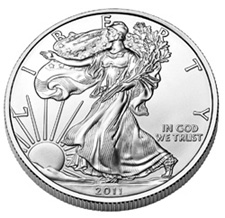 Corrections are the norm in any long term bull market and silver is no exception. The correction that began in May of 2011 and ended in December has set the stage for what will be an explosive move up during 2012 and beyond.
Corrections are the norm in any long term bull market and silver is no exception. The correction that began in May of 2011 and ended in December has set the stage for what will be an explosive move up during 2012 and beyond.
Since hitting the 2011 low of $26.16 on December 29, 2011, silver has climbed steadily, closing on Monday at $33.18, up 17.4% on the year and up 26.8% from last year’s low. Today’s price should be viewed by long term silver investors as an exceptional opportunity for capital appreciation and wealth preservation.
The underlying fundamentals that will drive silver higher this year include unprecedented demand for both physical silver and silver ETFs, virtually limitless money printing by central banks worldwide to prevent a debt implosion and a growing realization by the public that the Federal Reserve is deliberating and systematically debasing the U.S. currency.
Sales of American Silver Eagle bullion coins by the US Mint may hit an all time record in January. As of January 30th, the Mint has already sold 6,082,000 bullion coins. The previous all time record for sales occurred in January 2011 when sales were 6,422,000 ounces.
Last January was atypical in that monthly sales of the Silver Eagles coins tapered off to about 3 million coins per month thereafter and only in September 2011 did sales exceed 4 million coins. In the three previous years from 2008 to 2010, January sales volume established the baseline of monthly sales for the rest of the year.
For example, in 2009, January sales of the Silver Eagle came in at 1,900,000 coins and average sales for the remaining 11 months averaged 2.44 million coins. If 2012 follows the pattern of 2008 through 2010, sales of the American Silver Eagle Bullion coins could average 6 million coins per month. Average silver bullion coins sales of 6 million per month during 2012 would result in a record shattering purchase of 72 million coins, up 80% from last year’s record of 39,868,500 ounces.
| American Silver Eagle Bullion Coins | ||||
| YEAR | OUNCES SOLD | |||
| 2000 | 9,133,000 | |||
| 2001 | 8,827,500 | |||
| 2002 | 10,475,500 | |||
| 2003 | 9,153,500 | |||
| 2004 | 9,617,000 | |||
| 2005 | 8,405,000 | |||
| 2006 | 10,021,000 | |||
| 2007 | 9,887,000 | |||
| 2008 | 19,583,500 | |||
| 2009 | 28,766,500 | |||
| 2010 | 34,662,500 | |||
| 2011 | 39,868,500 | |||
The vast majority of holders in the iShares Silver Trust (SLV) are solidly committed to owning silver and refused to sell positions during the sharp correction of 2011. When silver hit a high of $48.70 (London PM Fix Price) on April 28th, the iShares Silver Trust held 11,053 tonnes of silver. After a rapid and sharp correction to $32.50 on May 12th, the SLV silver holdings declined modestly to 10,516 tonnes as short term speculators and over-leveraged investors sold out at the bottom.
On December 29, 2011, as silver hit its low for the year at $26.16, the iShare Silver Trust held 9,605 tonnes. A correction from the price high on April 28th to the low on December 29th took silver down by 46.3% but holdings of the iShares Silver Trust declined by a very modest 13.1%. The vast majority of long term silver investors did not sell out during the correction in expectations of sharply higher prices in the future.
According to Reuters, precious metal dealers are reporting record breaking silver sales and “dollar sales of silver and gold products reached parity in January for the first time in its history – even though bullion costs 50 times more.” In addition, dealers are selling record number of the Silver Eagle “Monster Boxes” which hold 500 one-ounce coins.
The European Central Bank, which in December lent a massive €489 billion of freshly printed euros to a collapsing banking system may have to provide double that amount (for a total of $1.27 trillion dollars) during the next round of emergency lending scheduled for February. According to the Financial Times:
European banks are preparing to tap the European Central Bank’s emergency funding scheme for up to twice as much as the ECB supplied in its debut €489bn auction last month, providing further evidence of the sector’s liquidity squeeze.Several of the eurozone’s biggest banks have told the Financial Times that they could well double or triple their request for funds in the ECB’s three-year money auction on February 29.
The gold to silver ratio, which on a long term historical basis, has been in the range of 16 is now at the bargain ratio of 52, suggesting strongly that silver could outperform gold on a relative value basis. At a gold to silver ratio of 20, silver would currently be selling at $87 per ounce.
The Sprott Physical Silver Trust (PSLV) just completed a follow on offering of Trust Units in which investors snapped up additional trust units representing about 11 million ounces of silver.
Silver’s rapid price gains during January is a harbinger of what could turn out to be a very good year for silver investors.

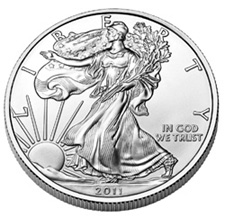
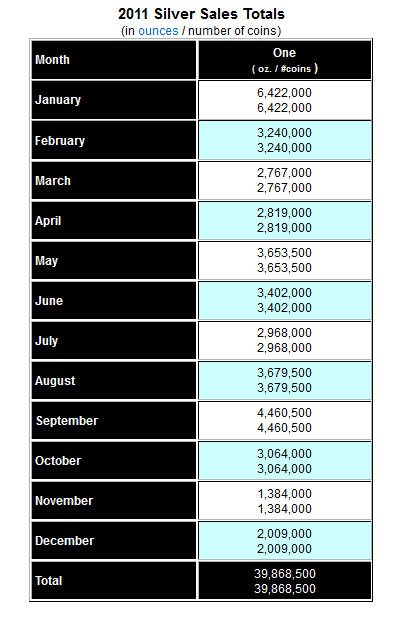
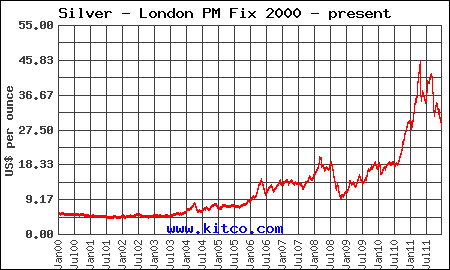

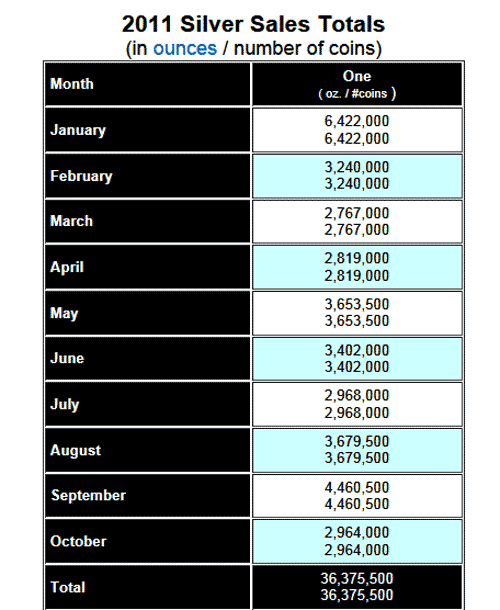

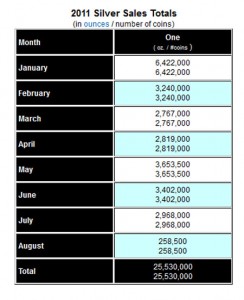
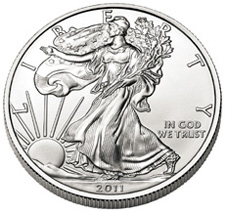

 Rep. Ron Paul, during a Subcommittee hearing on problems at the US Mint, linked the shortage of gold and silver coins to the “huge debasement” of the United States currency.
Rep. Ron Paul, during a Subcommittee hearing on problems at the US Mint, linked the shortage of gold and silver coins to the “huge debasement” of the United States currency. The weekly sales levels for the United States Mint’s gold and silver bullion coins were little changed from the levels of the previous period. Across the available options for gold, sales reached 23,000 ounces. Meanwhile total sales of 697,500 ounces of silver bullion were recorded.
The weekly sales levels for the United States Mint’s gold and silver bullion coins were little changed from the levels of the previous period. Across the available options for gold, sales reached 23,000 ounces. Meanwhile total sales of 697,500 ounces of silver bullion were recorded.